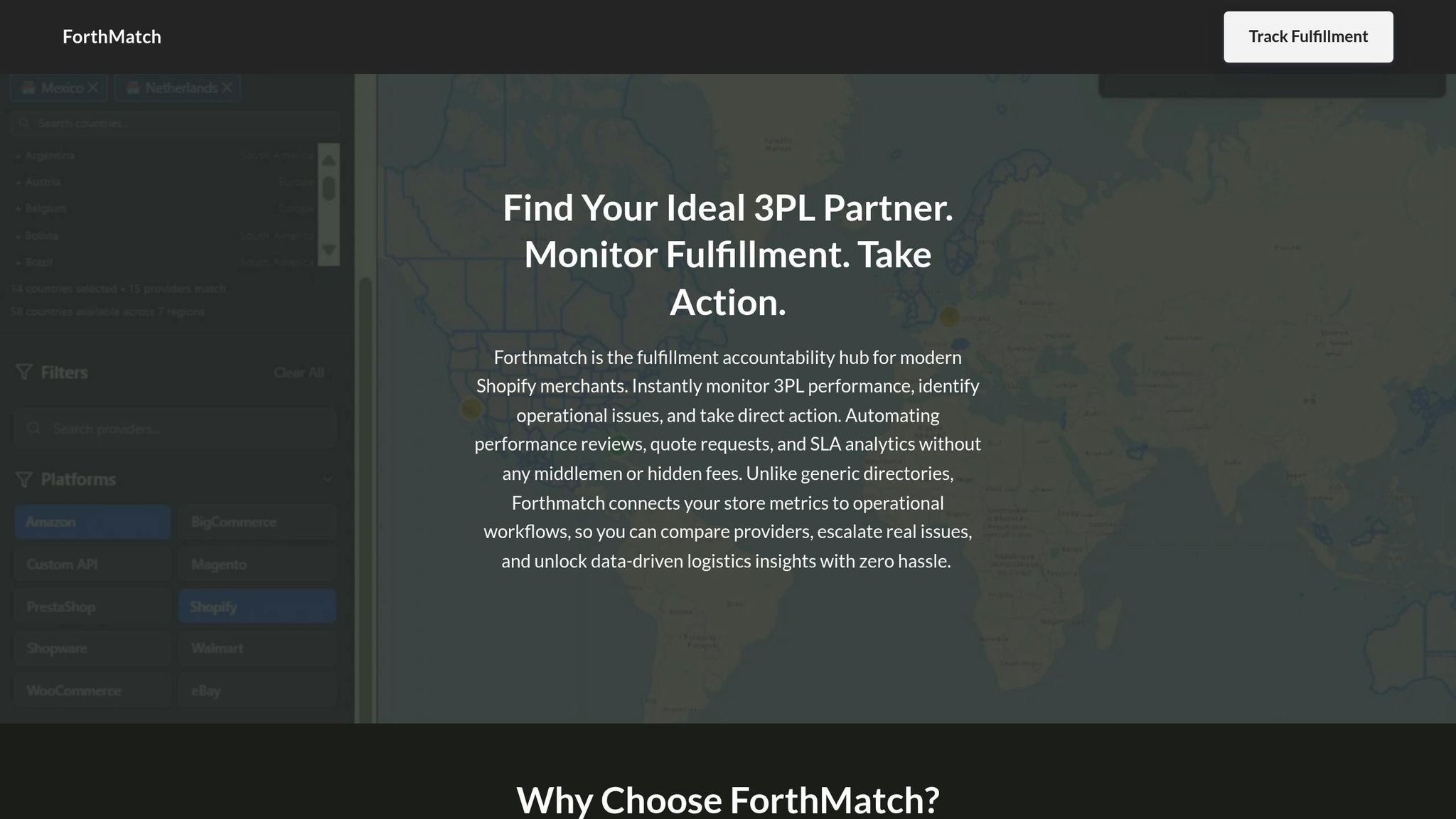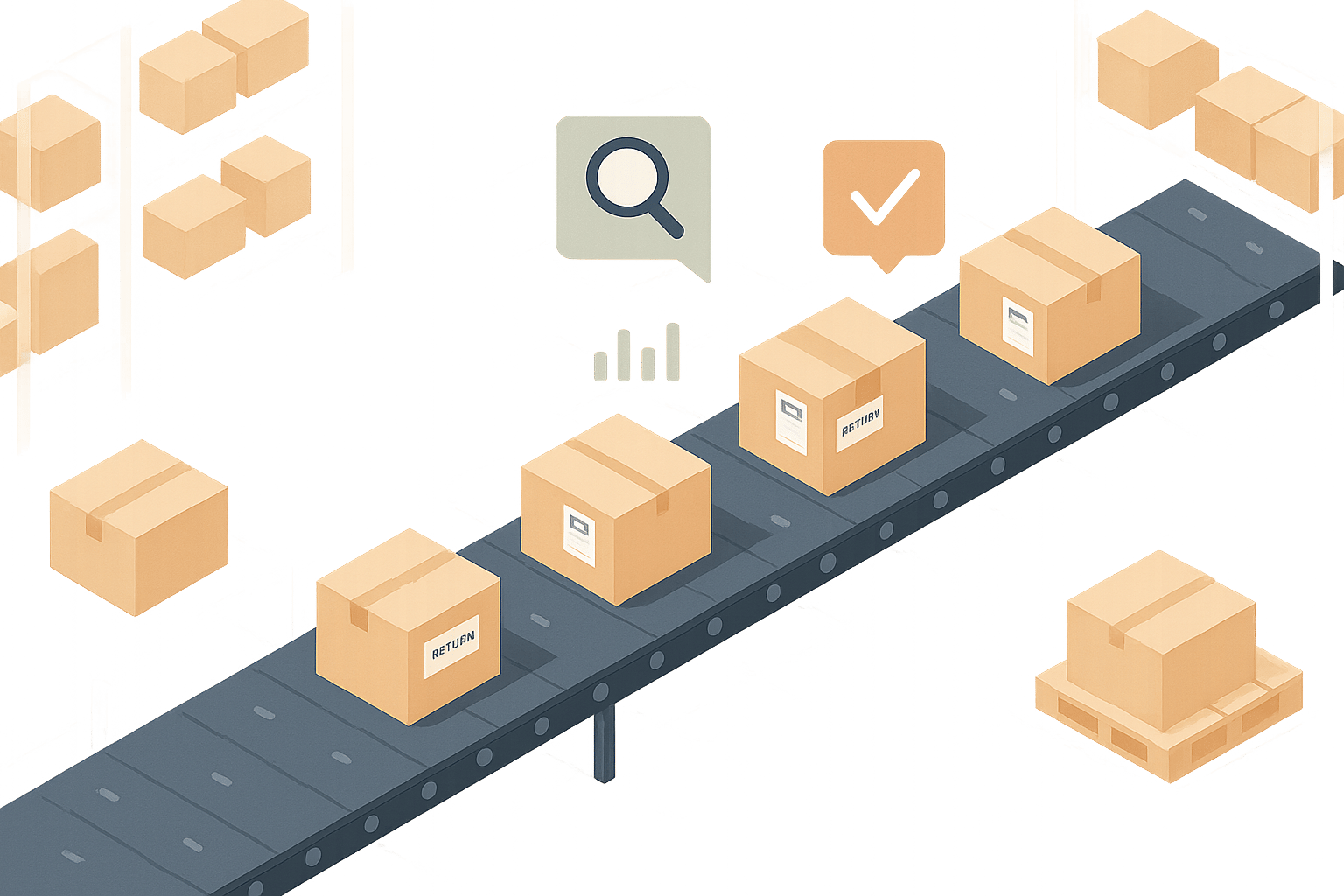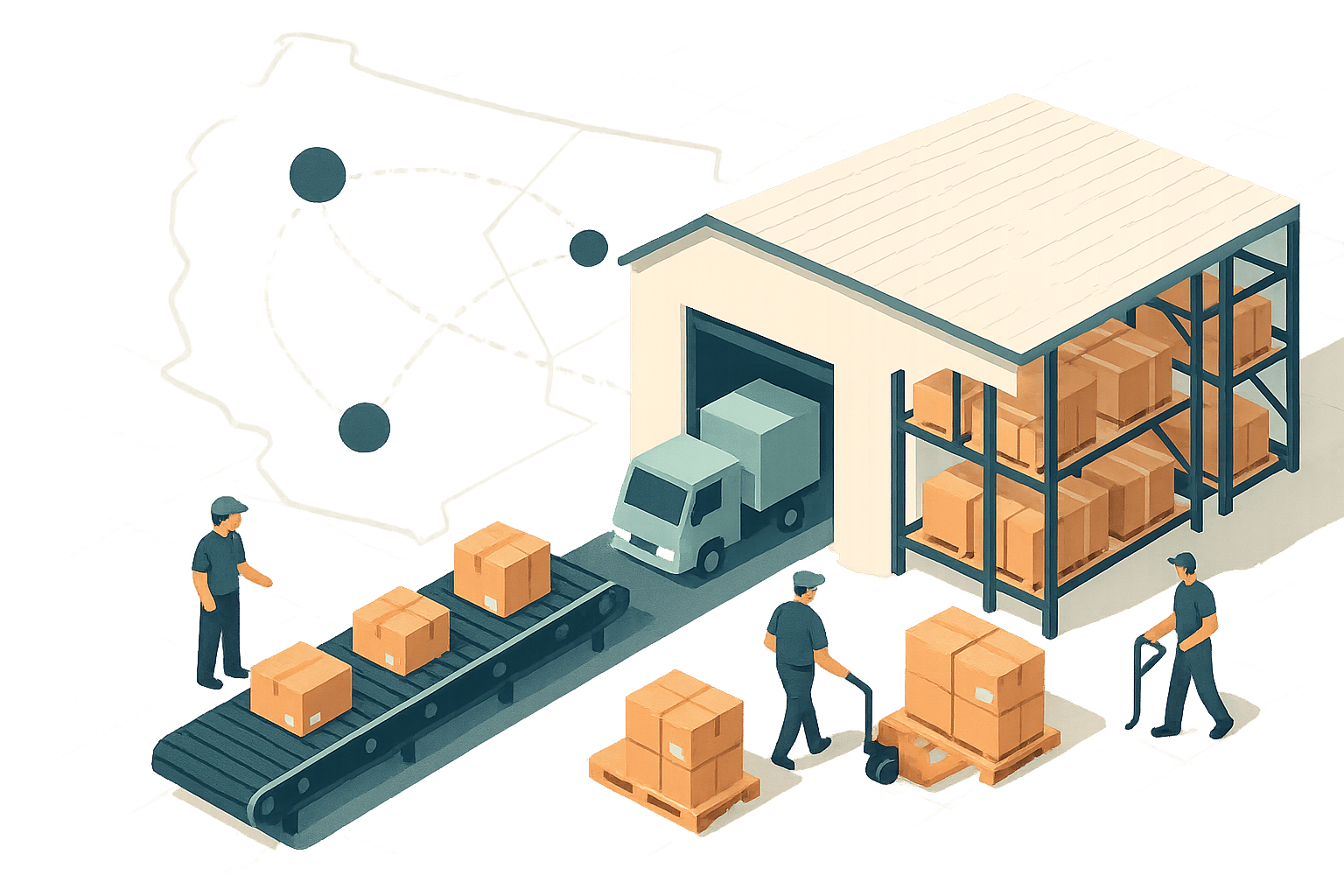Logistics companies are working hard to follow strict green rules and meet the high need for eco-friendly ways. Here's how they are aiding brands in lowering emissions, cutting costs, and keeping up with new laws like California's SB 253 and SB 261, as they also appeal to buyers who care about the environment.
Key Points:
- More People Want Green Ways to Move Goods: Over 70% of U.S. buyers like brands with fair supply chains, and 66% think about the environment before they buy.
- Following Rules is a Must: Laws make companies share their emissions data and fine them if they don't.
- Tech Helps: Tools like live emissions tracking, smart routes, and low-energy systems let logistics firms reduce emissions by up to 30%.
- Real-Life Success Stories: Three brands - TrendForward, TechVision, and LuxeBeauty - used green logistics partners to reach their eco goals, get better at what they do, and keep their brand image.
These examples show that using sustainable methods is more than just sticking to rules - it's a wise move in business that fits what buyers want and lowers the chance of problems.
Case Study 1: Fast-Fashion Brand Lowers Harm to Nature
The Problem
In 2023, TrendForward, a big name in fast-fashion, hit a big bump when California made tough rules on how much bad air you can make. Bad timing, as they needed to send things fast due to lots of orders. They had to cut down bad air by 25% to follow the new rules.
It wasn't just about following rules - the buyers wanted it too. If they didn't show they cared about the earth, they could lose their top spot. But money was tight. Their last help for moving goods was too costly since they tried to keep air clean. They had to find a new way that saved money and helped the earth.
The Fix
To deal with this, TrendForward joined up with GreenLogistics Pro, who are good at moving stuff in a clean way for online shops. They made a plan to cut bad air, work better, and be clear about it all.
A big move was to not add to the bad air. GreenLogistics Pro made their center better by using sun power, putting in LED lights that use way less power (up to 75% less), and smart ways to control air that cut costs by 30%.
For getting goods to the last stop, they used electric and mix-power cars, and made up for any bad air they still made by funding tree planting. They also used smart ways to figure out routes, using current road and weather info to send many items in one go. They even used boxes and packing that would rot away, cutting trash and saving money.
What Happened
Within eight months, TrendForward met its goal to make less bad air - a 25% drop, quicker than planned. They also got 30% faster at sending things, so they could keep their promise of fast service while being more green. This also helped save money.
What's more, TrendForward put out reports every three months on their bad air on their site, winning over buyers and showing they really cared about keeping our world clean. This story shows that a fast-fashion place can keep up with hard competition and still help the earth.
Case Study 2: Tech Firm Tracks Gas to Meet Rules
The Problem
At the end of 2023, TechVision, a firm that makes tech goods, had to deal with tough new laws. In California, new rules - SB 253 and SB 261 - said big firms must tell all about their gas output and cash risks from weather. Plus, new SEC rules made it hard for public firms. TechVision had to track its gas use in a big, hard supply chain. Sadly, its old shipping mate couldn't give the clear, trackable data needed to follow these tough rules.
The risks were big. If they did not follow the rules, they could face big fines. With small profit edges in a tight market, there was no room for slip ups. Also, buyer trust was at risk - data shows high doubt among buyers about green claims that can't be checked.
The Fix
To tackle these problems, TechVision joined with EcoLogistics, a 3PL that knows how to track emissions for tech firms. They set a three-part plan: use electric trucks for last-mile drop offs, roll out smart gas tracking tech, and make truck loads bigger.
EcoLogistics got a set of electric trucks for city and town paths, where gas rules were very tough. They put up charge sites at main storage spots, and taught drivers how to use electric trucks well. These shifts cut all gas from these trips.
To watch gas use rightly, EcoLogistics put in an IoT system. This system kept watch on fuel, miles, and power use all the time, making reports right away for rules needs.
At last, EcoLogistics made truck loads bigger to fill each truck better. By cutting trips, they saved 15% in travel runs, saving TechVision over $100,000 in fuel money.
The Outcome
In just ten months, TechVision saw big good changes. Emissions from getting goods around fell by 40%, and fuel money went down by 20%. More than that, the firm set up real-time gas tracking for customer orders. This truth spoke strong to young, green-minded buyers who like real green acts.
Having clear gas data also made rules easier to follow. Instead of hurrying to get info for rules reviews, TechVision could make full reports fast. This not just made following rules easier but also lifted the firm's name with rule makers and money folks. By mixing green actions with strong money results, TechVision kept its spot in a hard market while meeting the needs of fast-changing rules.
Case Study 3: Top Brand Keeps Its Rich Look While Going Green
The Problem
LuxeBeauty, a high-end skin care brand from New York, faced a tough spot in early 2024. On one side, they had to follow new green rules. On the other, they had to keep the rich feel their buyers loved. The problem was big: how to cut waste and track smoke without losing the lush touch that marks your brand?
Their packs, though fancy, used old stuff that didn't fit green aims. Also, they had no way to check or show their smoke marks. To make things harder, the CEO felt that too much green show-off might push buyers away. Yet, with over 70% of U.S. buyers thinking green in their rich buys, the push to shift was clear. LuxeBeauty needed a way that did not make them pick between doing right and keeping their rich rep.
The Answer
To face these tasks, LuxeBeauty joined hands with a third-party help (3PL) known for green help fit for top brands. Together, they worked on three big things: green packs, less-waste storages, and clear green track.
- Green Packing: LuxeBeauty picked stuff that can break down but still looked top-end. Used paper took over for plastic fillers, and boxes that were FSC-ok made sure the box-opening time stayed as posh as always while fitting green rules.
- Less-Waste Storage: They moved stuff to a LEED-ok place with solar parts, LED lights, and smart temp checks. These changes cut down power waste and also kept their soft skin care goods in the best spot.
- Green Tracking: IoT bits and live watching ways were used to check power use and moving smoke. This made it easy to make full notes for rules and tell about green wins to buyers and mates.
This mix of ways let LuxeBeauty stay right without losing its rich feel.
The Outcomes
By mixing green ways into their work, LuxeBeauty hit the right mix of rule needs and their brand's rich image. The gains were big: a 35% cut in pack waste and a big drop in all smoke due to less-waste acts. The new track ways also got LuxeBeauty third-party ESG ok's, lifting trust among mates.
Buyers loved it a lot. LuxeBeauty’s green packs turned into a hit on social media, with box-opening clips showing the brand's care for the earth. This open talk also grew trust with money folks and shop mates, showing that green and rich can go well together.
LuxeBeauty's story shows how top brands can pick green moves without giving up their style or buyer love.
Make Fulfillment Easy and Sustainable, with Renewal Logistics | Let's Talk Supply Chain 332
sbb-itb-eb0f906
Top Moves by Eco-friendly 3PLs
The cases shown here tell us the best moves used by 3PLs that care about keeping Earth clean. They show how top shipping groups mix care for the Earth into their work. These common methods can help DTC brands build green supply chains while still doing great in business.
Tech Helps
Tech is key to making 3PL work more Earth-friendly. For example, a big 3PL used EcoTrack's live track system and cut emissions by 12% in a year. Route tip tools also help by finding the best low-fuel paths, cutting down on both gas use and costs. Tools like LaneHub and Loadsmart are good too because they match loads well, making 15% fewer trips needed. This move saved more than $100,000 in fuel costs and cut emissions a lot. High-tech warehouse tools with IoT and robots cut wasted power use and make better use of materials.
Smart Work
Green 3PLs look at work plans made to cut down their mark on Earth. Many storage places now use sun and wind power, and better gadgets like LED lights and top HVAC units, to use less power and make fewer emissions. Custom packing helps too. For instance, a perfume brand with Tetris3PL lowered its goods sent back from 30% to just 5% by using special safe packs. This cut trash and kept products safe. Moving goods back is another strong area. One firm fixed and sold again about 70% of its returned items, saving a lot of money while keeping stuff out of dumps.
Eco-respect as a Core Value
For green 3PLs, loving the Earth is not just about the work - it's big for their brand too. Clear reports and real green badges, like ISO 14001 and EPA SmartWay, make trust with Earth-friendly buyers and shops. This matters when 88% of young buyers say they don't trust green claims with no proof. Digital tags, like QR codes, check rules and make it easy to trust between makers and shops. Many green 3PLs set clear Earth goals, tracking things like carbon per shipment, power per area, and avoiding trash. Sharing these numbers often shows they are serious about meeting Earth goals.
These moves not only better their care for Earth but also guide others in picking the right 3PL friend.
How to Pick a Green 3PL for Your DTC Brand
If you have a DTC brand and want to be green, going for the right green 3PL (third-party logistics provider) is key. Get ready to set clear rules, make sure things are clear, and work well together. Here’s your guide to make this choice with care.
How to Pick Your Partner
First, look for good 3PLs with known green certifications, like the LEED certificate for low-energy warehouse work. Real credentials mean the provider works in true green ways, not just in words.
Talking about words, ask for real proof. A big 88% of Gen Z buyers don't trust green claims that aren't checked. If young, green-minded folks are who you sell to, you will want proof of your buddy's green work. This means results that match worldwide green aims.
Then, see what they can do. Ask for numbers on how much coal per send out, power use in warehouses, and how they cut trash. These facts show their new ideas and good results from past work. With these key things checked, look at how the 3PL shares their green results and works with your brand.
Be Clear and Work Together
Go for 3PLs that share full green reports. Lists that grade them on coal use are great to see how open facts can make things better all through the move network.
Working together is big, too. Some local 3PLs use apps like LaneHub and Loadsmart to put sends together, cutting trips by 15% in a year. This saved over $100,000 on fuel and cut down a lot on smoke. Moves like this show they want to cut waste in travel by smart plans.
Rules are big too. With rules like the SEC's talk on climate and California's laws on smoke reports, your 3PL should know how to stay in line. Ask for times they've helped other brands follow these rules and miss fines.
Also, make sure your 3PL shares updates four times a year that go by good green aims. Top providers often use smart tech and big data checks to watch how fleets, warehouses, and overall outputs are doing. This kind of deep, checked report keeps all on track.
Using Forthmatch for 3PL Checks

Make your hunt easy with tools like Forthmatch, a spot that helps DTC brands size up 3PLs by reach, price, how well they work together, and what other sellers say. Forthmatch cuts out middlemen and extra costs, making choosing easy and clear.
When being green is a must, use Forthmatch's filters to find helpers with green certificates, check systems for smoke, and plans for using new, clean energy. The platform's live maps of service spots help you pick 3PLs right for your spot while meeting your green needs.
Here’s what Gordon Belch, co-start at vybey, said about Forthmatch:
"Forthmatch gave us daily, granular visibility into fulfillment delays and real accountability with our 3PL partner. The before/after tracking saved vybey $600/month and provided a clear action plan to improve operations."
Forthmatch makes the RFP step easy. You can send requests that care about the earth to many 3PLs and look at how they reply about green acts, cost, and how fast they send. For steady checks, the SLA Analytics Hub ($9/month) gives deep reports to see if your 3PL meets the green goals set. This makes sure your link brings real results, not just words.
End Thoughts: Making Eco-Friendly Supply Lines with 3PL Partners
Case studies show that eco-friendly supply lines do well with smart partnerships. These unions cut down on harm to our world and make work run better.
At the core of these unions are three key parts: tech-led open info, team work, and proven green methods. All together, these form a base for real change. For example, data shows that using tech-led fixes can cut down gases by 12% and lower trips by 15%, saving more than $100,000 on fuel. These facts prove a clear truth: being green and making money can walk side by side.
Laws push the need for green ties too. With rules like California's SB 253 and SEC's weather rules, and with more buyers - 66% of all and 88% of Gen Z want proven greenness - not looking at these shifts is no more an option.
Direct-to-buyer (DTC) brands must set clear green goals. Points like ISO 14001 papers, open gas checks, and low-use energy steps should lead choices. Tools like Forthmatch make this easier, helping brands weigh 3PL providers on key green numbers.
Looking on, always getting better is key. This means laying out clear goals, keeping steady reports, and using live checks. With shipping set to make up to 40% of world CO₂ gases by 2050, the bonds made now will shape our future.
Green supply lines do more than meet rules - they build tough, smart firms that match what buyers want. Case studies back that the right 3PL partners bring both green gains and work wins.


